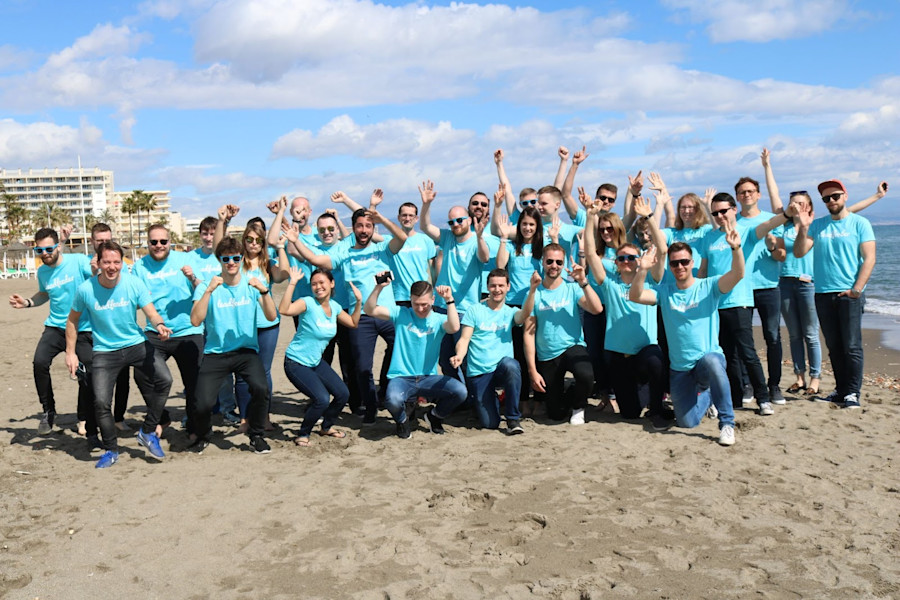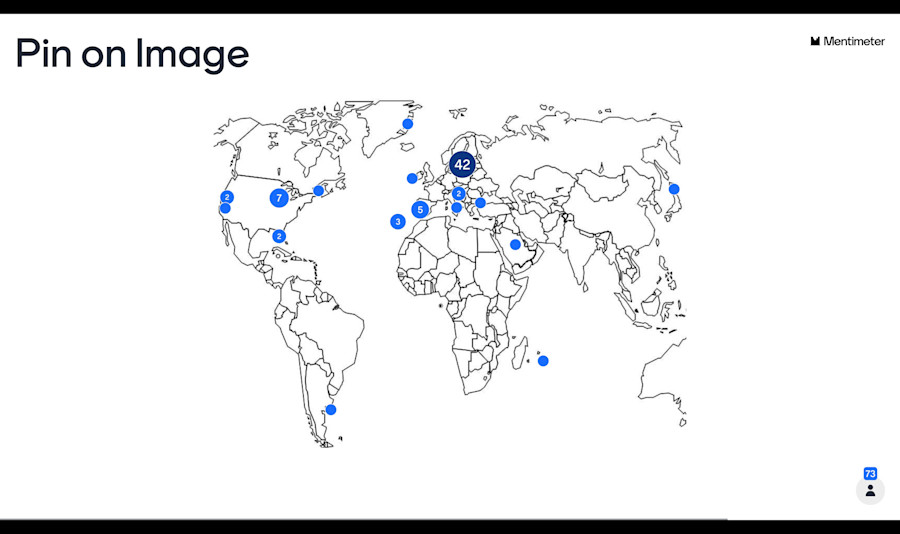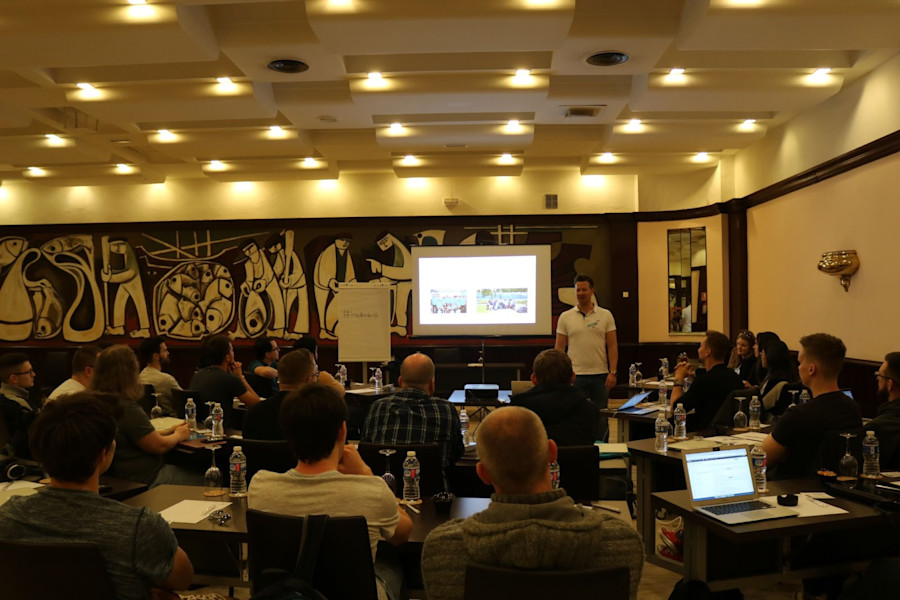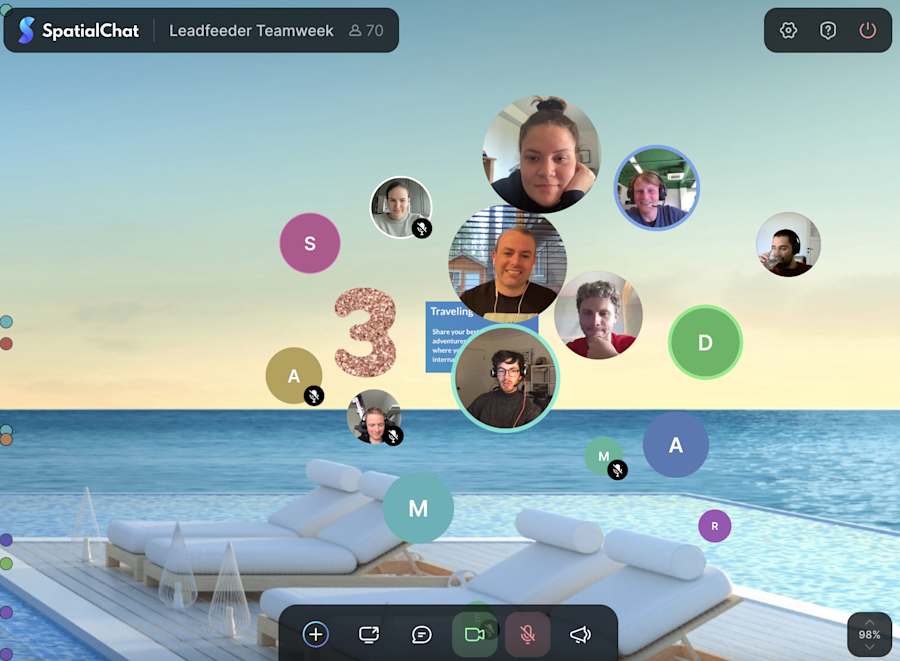Leadfeeder is a remote-first company with more than 100 employees all over the world. Over the years, we've learned a bit about running a successful remote team, including the importance of bonding with our twice a year “team weeks”.
Leadfeeder's story started more than a decade ago. Our founder Pekka was helping his dad find new leads for his business — he was frustrated seeing all these companies visit the site but not leaving their contact info.
Surely, there had to be a way to figure out who those visitors were and bring them back.

He was right, and he built a cool tool called Snoobi to help his dad's company grow, then sold the tool to a big telecoms company. Leadfeeder is built on that same expertise.
Today, we're a global company with more than 100 employees all over the world. In 2020, we successfully transitioned from a start-up to a scale-up, with the aim to double our team size by 2022.
We’re #hiring. If you know anyone talented and awesome, send them our Leadfeeder Jobs link.
Note: Leadfeeder is a sales and marketing tool that helps brands uncover companies visiting your website and turn them into customers. Sign up and we'll start sending you leads today.
About the remote work culture at Leadfeeder
When COVID hit, we saw a number of companies scrambling to figure out how to move their teams remotely. For us, however, we had already been forming and maintaining a remote culture for several years. (We like to say we were remote before it was cool 😉 #trendsetters.)

Why did we aim to build a remote team? Well, working from home in pajamas is definitely a perk — but it's not the main reason.
As a remote-first company, we can hire the best person for every job, no matter where they’re located. That means we have top experts in every position. We don't have to limit our job search based on geography.
As a result, we can focus on finding ambitious self-starters who believe in our vision to help businesses maximize sales by identifying, qualifying, and connecting with the companies visiting their website.
We're dedicated to challenging the norm, being change-makers, and creating a powerful, transparent remote team that isn’t deterred by time, borders, or language. That means being a goal-oriented company focused on growth and customer service. We don't micromanage our team, and we always come together to get things done.
The image below is from team week showing the location of everyone on the call.

This is what Chicago-based Lex Conerty had to say about the Leadfeeder culture — she has been working remotely with LF for a little under two years.
"We’re completely trusted to work from home and get our work done (which is apparent through hitting our goals) but there’s still a collaboration with the entire team and between teams too!"
Collaboration, in particular, is a challenge with remote teams, and that is one of the main goals of our team week.
What is Leadfeeder team week?
Team week is one of the ways we keep Leadfeeder team-oriented.
Twice a year, we all fly to the same destination to talk about our business goals, get to know each other, and have some fun. In the past, the team has met up in Magala, Riga, Gdansk, Greece, Bucharest, and one remote (thanks COVID!), with a second remote team week taking place in April.
Currently, we're keeping our fingers crossed for Romania in September!

Team bonding is crucial — not just to our overall mental health (obviously important), but also because we know when teams have the time to bond, they can provide better customer service and come up with more creative solutions.
Here's what a team member (who didn't add their name to our survey form 😆) had to say about our team-first approach:
"Everyone has a team-first mindset. The culture is supportive and it's easy to bring up ideas. People are ambitious, energetic, and have a hunger for growth. Even the smallest achievements are celebrated which keeps up the motivation."
Maisa Aaltonen, a senior support specialist at Leadfeeder, shared why she enjoys team week:
"Team weeks allows everyone to get to know each other better, create a sense of belonging together, brainstorming and sharing ideas, have fun, and create memories together."
Team week isn't just an excuse to travel, it's an integral part of building our thriving remote culture.
Our recent remote team week
Our most recent team week took place in April remotely. Despite the “location”, this team week still took months of planning and coordination. Leadership went with a “Mission to space” theme as Leadfeeder recently transitioned from start-up to scale-up status. With the theme, each team member received a box of custom LF gear including a team week tee, water bottle, laptop camera cover, sticker, and astronaut food (more on this later).

Taking place on Hopin, the experience was seamless. I’ll share the schedule below, but first, let’s talk about a few highlights.
CEO business outlook & strategy
Transparency is celebrated in most work environments, but even more so in a remote culture like ours. The Leadership team at Leadfeeder does a nice job of showing their cards. This session led by CEO, Pekka Koskinen, was widely celebrated and appreciated, receiving some of the highest feedback of the week.
Stackable scavenger hunt
HR brought in Off Site to host an intense scavenger hunt. The items requested by our host, Todd were amongst the norm: a hat that doesn’t belong to you, something that got you through the pandemic, and an item that reminds you of your time at Leadfeeder. The plot twist came at the end when the team was asked to stack their findings (the tallest tower wins).
With a team full of salespeople, things got pretty competitive. In addition to the fierce competition, team members participating from co-working locations made the experience that much more entertaining.
Motivational Speaker Terry Virts
We love a theme, and team week is no exception. For this reason, Leadfeeder CMO, Andy Culligan, messaged his LinkedIn connection, Terry Virts, when he found out the “Mission to Space” theme of team week.
The squad got a full hour-long presentation and Q&A from the one and only Terry Virts.
His title is as follows:
COLONEL TERRY VIRTS International Space Station Commander Space Shuttle Pilot Test / Fighter Pilot Author - How to Astronaut Virtual book-tour dates here! Motivational Speaker Podcaster
Hearing from Terry firsthand felt like one of those once-in-a-lifetime cool experiences. Personally, I was spamming my family group text with facts each time Terry clicked to the next slide. I think the fam muted me, but that didn’t dim my excitement.
Here are a few screenshots that I took during the talk.
This shot is of Florida. Terry showed us photos of basically the entire world, but my family lives in Florida, so this one was for them.

Next up was a surreal and inspiring photo. At the time of this shot, the USA and Russia were on terrible terms. There was an ammonia leak (thankfully, it was a false alarm) on the USA side of the space station, sending the US astronauts over to join the Russians to be on the safe side, literally.
Team USA got word that they were welcome to stay as long as they needed to on the Russian side despite the extreme turmoil between the two countries back on earth. The photo shows the astronauts from both countries handling the red alerts together.

And last but not least, a space view of Italy. How gorgeous is that?

A huge shout-out and thank you to Terry Virts from the Leadfeeder team. He quite literally brought the theme to life. P.S. go listen to his new project, the Down To Earth Podcast.
Spatial Chat team building activity
This s*&% is bananas (in the best way). Spatial Chat was new software for Leadfeeder to try and it’s safe to say that we will be back.
Let me set the scene. The background of the chat was the pool outside of a stunning ocean-side villa. The team pre-set 4 topics which were in different locations across the pool deck. When you enter the chat, you’re present as a bubble with your face. Every 20 minutes, you drag your face to a different topic and start chatting with the people closest to you. The tech is spatial so the only people you can hear are those closest to you.
By far, “traveling” was the most popular topic. Not shocking as Leadfeeder’s remote culture allows team members to traverse the world. Here’s a screenshot of the traveling chat.

How does team week contribute to Leadfeeder’s culture?
One of the biggest challenges of a fully remote team is finding ways to bond and connect with each other. With more than 100 employees around the world, getting to know each other outside of Google Meet is essential.
Sometimes that includes doing goofy stuff like spelling out our name in the sand in Gdansk.
(No team member was injured in the taking of this photo.)
Twice a year, we get together to know each other, have fun, and brainstorm solutions for helping Leadfeeder grow. Carol Martindale, Head of U.S. Operations + Global Partnerships at Leadfeeder at shares,
"Team weeks play a huge part of our remote culture. That in-person engagement is key to helping all of us develop a deeper connection and trust with one another. While we’re all comfortable working remotely and thrive in this environment, the few times we get to bond in person helps to carry us throughout the year."
Lex Conerty, senior account executive at Leadfeeder, shares,
"Team weeks help create the culture and connections that remote companies miss out on! Think of it as a crash course of happy hours or team events. Instead of having a monthly team bonding event, we have a full week 2x a year. Team week helps us feel comfortable reaching out to teammates when we’re all back at home."
It's is more than just fun; team week is a way for us to build relationships with each other so we can deliver better results to our customers.
Note: Leadfeeder is a sales and marketing tool designed to help companies find (and sort) leads by tracking website visits. Sign up for a 14-day trial today.
Get more from your web analytics.
t’s time to turn your website traffic data into something more meaningful. Website visitor analytics enable you to identify and qualify the companies visiting your website, even when they don’t fill out a form.
Show me how







